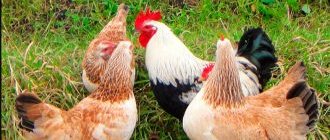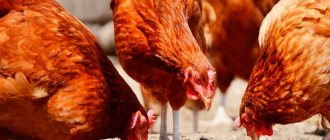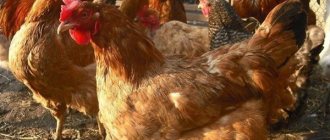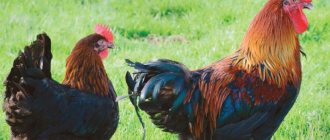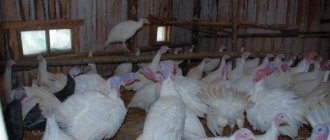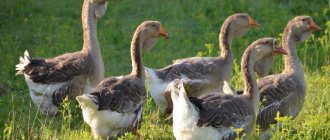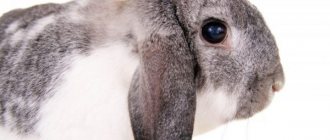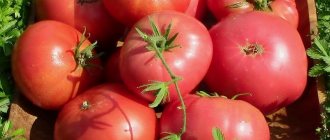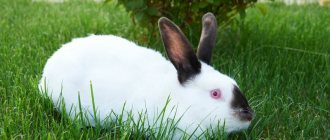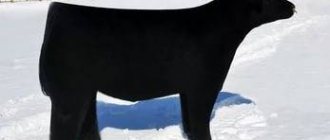The Jersey Giant is a unique breed of chickens, the representatives of which are real giants. Among meat poultry breeds, this species has received a special place. Jerseyans are record holders and are considered the largest birds on our planet. Chickens can weigh up to 7 kg, are hardy and resilient, and are very popular on private farms.
Origin
The Jersey Giant breed first became known in the state of New Jersey (USA). In 1915, Ukham Dexter was able to obtain a unique breed of hefty chickens, which received such an interesting name.
John Blackie in the second half of the 19th century, through selective breeding, developed a new breed. This process took almost 20 years. In the 21st century, this species was safely delivered to England. It was here that active work began in the future to obtain birds of various colors.
Over time, this breed spread and became established in Europe. Thanks to numerous genetic experiments, Jerseys with blue feathers were obtained. German scientists were able to breed snow-white birds.
Feeding
Once hatched Jersey chickens are fed boiled egg crumbs. On the 4-5th day you can already give millet, corn or wheat porridge mixed with the same amount of non-acidic cottage cheese. Finely chopped nettles, onions, dill, and alfalfa are added to the mixture. For the first week, chickens are fed 6 times a day. After 1-1.5 weeks, boiled vegetables, such as carrots and potatoes, can be included in their diet. In the morning, you can add a few drops of fish oil to their food. From the age of one month, chickens can be fed fresh vegetables, adding them to the mash.
From 2.5-3 months of age, when Jersey Giant chickens begin to actively grow, their diet should be rich in protein, calcium and vitamins. From now on, birds need to add peas, any other legumes, cottage cheese, some bread, boiled fish, and whey to the mash. Fresh herbs and vegetables can be given ad libitum.
Adult chickens should be fed with a mixture of equal parts of corn and wheat, steamed feed in combination with vegetables, a small part of cake and meal, chalk, bone meal, shells, and salt should be added to the feed. In summer, they need to be let out for walks as often as possible; during this period, they can be fed 2 times a day, in winter - 3 times. In addition to food, Jerseys should always have free access to water and pebbles, gravel, sand (in a separate container, which should always be in the chicken coop).
Description and appearance
Beautiful and stately chickens are the main representatives of the species. The head is large, the male has a six-toothed crest, straight, red, and earrings of the same shade. The beak is not large and has a noticeable bend. The eyes have a dark brown tint.
The neck is covered with feathers, the back is long and straight, the belly is round and slightly protruding. Large and strongly protruding breasts, which causes a slight change in the center of gravity. Thanks to this, the birds develop a proud posture. The tail is voluminous, but in females it is more expressive, unlike roosters.
The main feature of the breed is its strong, wide-set and stable paws, on which there are 4 toes. Externally, hens resemble males, but their body sizes are slightly smaller and seem more squat.
Bird temperament
The birds are not shy, they have a balanced and quiet disposition. They can easily endure even severe stress. Changing your usual environment does not have a negative impact on productivity.
Representatives of this breed are very active and love walks in the fresh air. The aviary does not need to be fenced with a high fence, since the birds do not attempt to fly.
Chickens are clumsy and a little slow, and can step on eggs. Therefore, it is necessary to collect eggs regularly.
Varieties
Only three subspecies of Jersey have been officially recorded:
- White - the plumage of birds is snow-white, the beak is yellow, and the legs are light gray.
- Black – the plumage is black, with a slight emerald tint.
- Blue - the color of birds shimmers in various shades of gray with light blue rays.
white “Jersey giant”
black “Jersey giant”
blue “Jersey giant”
Subtleties of content
The main requirement for keeping Jersey chickens is a spacious chicken coop and an aviary for walking. The minimum area per individual is 1.5 m2. One flock should have no more than 10 hens and 1 cockerel.
Despite their phlegmatic nature, Jersey Giant chickens need sufficient space to roam. Otherwise, they begin to suffer not only from infectious diseases, but also quickly gain excess weight. Obesity is fraught with loss of the ability to move, cessation of egg production, deterioration in the quality of meat and ultimately can lead to death.
From the point of view of profitability of the farm, a spacious aviary allows the breeder to save up to 50% on feed, since the birds are inclined to forage. The benefit of such keeping lies in the fact that in the process of searching for food, chickens destroy insect pests and their larvae, and also peck out weeds.
Chicken coop
In winter, giants should be kept in a closed, warm house with good ventilation and additional lighting. Taking into account the massiveness of the individuals, the perches are set up low, and a soft bedding of hay is placed on the floor so that if the bird falls during sleep, it will not be injured.
It is best to arrange nests for laying hens with a slight slope and a hole for rolling out eggs. In female Jersey giants, maternal instinct is well developed, but due to their large body weight there is a risk of eggs being crushed. For the same reason, it is better to hatch chicks in an incubator.
Walk
Due to the same massiveness and weight of the bird, there is no need for a high enclosure fence. The only exceptions are those farms that keep other, lighter breeds of chickens.
To avoid mixing and spoilage of the Jersey breed, it is necessary to isolate them from representatives of other types of chickens in which there are males in the flock. At the same time, it is not critical if females of other species are constantly present in the same chicken coop with the Jersey giant.
If all conditions of keeping are strictly observed, chickens of this breed will delight their owners with fresh eggs all year round, with the exception of the molting period.
Diet
As with other meat breeds of chicken, feed for Jerseys should consist of corn (40%), wheat (40%) and various vitamin and mineral supplements (20%). To keep a bird's bones strong and its eggshells hard, it needs calcium. The main supplier of this mineral to the chicken’s body is small shell rock. In its absence, you can give chalk, but you should remember that this cannot be done on an ongoing basis. In a bird's intestines, chalk can stick together and lead to gastrointestinal blockage, which can be fatal.
Advantages and disadvantages
Jersey giants have certain advantages, which include:
- the meat is tasty and juicy;
- high productivity;
- birds gain weight in a short time;
- eggs of excellent taste;
- easily adapt to different conditions;
- females become excellent brood hens;
- are practically not exposed to diseases;
- high survival rate.
Like any other breed, this species has some disadvantages:
- the birds are large, so they need a large area for walking;
- it is necessary to select a special diet, which will ensure the survival of the young;
- The taste of meat in birds older than 11 months decreases.
Birds of this breed often suffer from such an unpleasant disease as obesity. This may negatively affect the quality of eggs for hatching.
Characteristics, sexual maturity and onset of oviposition
Sexual maturity of Jersey giants begins at six months of age. Eggs for laying in the incubator are laid from the age of eight months.
How to find out how a particular chicken is laying: a bird that is laying eggs has a comb and lobes that look full and smooth, the belly is large and soft (not hard - like an overweight chicken). The skin under the wings is soft, velvety, and not covered with scales.
Be sure to read:
Rhodonite chicken breed: description, photo, features of the breed
Adult roosters of the largest purebred chicken breed weigh up to 9 kg
There should be a distance of three fingers between the pubic bones, but if there are not even two fingers there, then the chicken will not lay eggs.
If you carefully look after your chickens, you won’t have to waste feed, and you’ll regularly have chicken on the table.
Some chickens lose their brooding instinct, so an outbred chicken can replace the hen.
Bird breeding as a business
If you plan to raise and breed birds of this breed to build a successful and profitable business, you need to take into account the following nuances:
- To raise chickens, use only highly productive, high-quality and expensive feed.
- At first, you will have to make a fairly impressive monetary contribution. If you approach business organization correctly, all investments will definitely pay off in the near future.
- Females are very large and clumsy, so they can crush eggs during incubation. To avoid this problem, use an incubator to produce chicks.
- The weight of an adult bird can be determined in advance from the egg.
- If necessary, you can calculate the mass of the young according to the following scheme - add 170 g of the weight of the chick to the mass of the egg.
- Select young animals no later than 10-11 hours after hatching.
Externally, eggs do not have any characteristic differences, so to start your own business you need to purchase them from reliable farmers. This technique will help you be confident in the purity of the breed.
Breeding Features
Parent stock
It is enough to keep one Jersey rooster per 10 laying hens in a poultry flock. A larger number of males does not increase the fertility of eggs, but causes injury to hens.
The rooster tears the backs of the hens, so it is recommended to sew special blankets.
Chickens without excess weight are selected for the parent flock. Overfeeding is the reason why laying hens stop laying eggs.
The Jersey breed has a developed brooding instinct, but it is recommended to hatch in an incubator due to the likelihood of eggs being crushed by large chickens.
Incubation table:
Caring for the young
Jersey giant chickens are born with dark, white or gray down. Weight - 40-45 g. By the age of one month, they gain weight up to 1 kg.
The hatched chicks are provided with optimal conditions. Transfer to a box at the rate of 60x60 cm area for 30 heads.
The temperature is maintained at +28.0°C. The duration of daylight hours is increased to 14 hours.
The chickens are fed water with glucose and vitamin C heated to +40°C. They ask for glucose at the pharmacy; it is a mistake to use regular syrup.
Feed is distributed at least 6 times during the day.
They begin to feed the Jersey giant livestock with crushed yolk and herbs, then a special feed for chickens with a balanced composition is suitable.
After 14 days, crushed grains, wet mash, boiled potatoes and carrots, and fresh chopped greens are introduced into the diet. Young animals are ready to consume an adult diet from the age of two months.
Characteristics
This species is considered a meat species, but the females have not lost the ability to lay eggs, which can also be fertilized. The hatching skills are not particularly evident, but this quality is not considered a disadvantage. For self-breeding, you must use an incubator.
Sexual maturity and onset of oviposition
Birds reach maturity at the age of 6 months, at the same time females begin to lay eggs. However, for breeding purposes or when using an incubator, only remove eggs from hens that are at least 8 months old.
Stopping oviposition and beginning of molting
In the first year of life, molting may occur in the spring; in the future, this process occurs in the fall. During the molting period, females stop laying eggs, eat less and become less active. The average duration of molting is about 4-7 weeks, but in some cases it can take longer.
Reasons that cause shedding for more than 3 months include:
- poor and limited diet;
- development of vitamin deficiency;
- infection of poultry with insect parasites or helminths;
- various diseases;
- severe stress;
- sudden relocation or introduction of new birds.
The duration of molting has a direct impact on how actively the hen lays eggs - the sooner this process ends, the sooner the hens will begin laying eggs. Birds of this breed endure this period very hard and need careful and constant attention, as well as good care.
Do not forget about the need to correct the diet - manganese and iodine preparations and vitamins are introduced into the menu. If possible, give your birds fresh viburnum berries.
Molting in heavyweight chickens may occur in the summer. Breeders with extensive experience advise culling such birds, since they still cannot become good laying hens.
If the bird practically does not eat during molting, moves little and becomes very lethargic, take it to the veterinarian. This behavior is not characteristic of a healthy individual.
During the molting period, birds are susceptible to diseases, so they should not be allowed to live in a cold room or get wet in the rain.
Productivity
In 12 months, one hen can produce approximately 180-185 eggs. The eggs have a rich brown shell. The weight of the first egg ranges from 50 g, in adults – 60 g.
Chickens of the described breed can be raised to produce meat products. Slaughter can be carried out at approximately 6-6.5 months of age, when the weight of the bird reaches 3 kg or more.
Dynamics of growth and weight gain
The maturation of individuals of this breed lasts until they reach the age of 7-7.5 months. In roosters, the active growth phase ends at approximately 5-5.5 months. If the individual is not intended for breeding, slaughter is carried out at this age.
By the beginning of the egg production period, which occurs at the beginning of the 7th month of life, the weight of females is approximately 4 kg, the weight of males reaches 5-6 kg. With age, the weight of the male continues to increase and by the age of 1.5 years the weight of one individual can reach 7 kg.
Too much body weight of a rooster negatively affects its ability to fertilize.
Productive qualities of the breed
Just by looking at the description of the Jersey Giant breed, we can say with confidence that this is a unique representative of the meat-egg trend. But what productive qualities does it have:
- Females begin to lay eggs only at 9 months.
- The egg production of females is on average 170-200 eggs per year. This is quite a high figure for meat-egg chickens!
A Jersey Giant carcass after slaughter can weigh from 4 to 6 kg!
- Medium-sized eggs - 55-70 g. Larger ones are rare. Since chickens of this breed begin to lay eggs late, by this time they are fully developed and therefore do not produce small eggs (less than 55 g).
- The color of the shell can vary from light cream to dark brown.
- The hatchability of eggs in the incubator is 90%. Safety of young animals – 85%.
- The lifespan of Jersey Giant hens and roosters is 8-12 years, but they are most productive in the first 5-6 years.
- Individuals grow large. A carcass after slaughter can weigh from 4 to 6 kg!
- The poultry meat is very tasty, there is a lot of it. The description of the breed indicates that the bird’s bones develop up to 7 months, and muscle growth continues up to 1.5 years. However, by this age the taste of meat decreases, so birds up to 1.5 years old are allowed to be slaughtered.
Jersey giant chickens quickly get used to new living conditions, climate change, and tolerate disasters well. They have a strong, developed immune system, so they rarely get sick.
Content Features
The described breed of chickens does not cause any particular difficulties in keeping, but there are certain subtleties due to the rather large size of the individuals.
Watch a review of the Jersey Giant chickens in the video below:
To obtain strong and healthy birds, you need to purchase chickens or eggs for incubation only from reliable and trusted suppliers. The ideal option would be to buy eggs and monitor the birth and growth of the chicks.
Poultry house requirements
For comfortable development of chickens, a room of at least 50 square meters is required. m. Be sure to provide sufficient lighting in the poultry house. It is advisable that the room have a window, which is recommended to be installed on the south side.
Regarding artificial lighting - for every 10 square meters. m install one light bulb. Don't forget to install a ventilation system. You can ventilate simply by opening the doors, but this will not be the best option in the cold season.
Laying hens are large in size and have a habit of throwing eggs out of the nest. Therefore, place nests as close to the floor as possible. Place boards at an angle near the nests to make it more comfortable for birds to climb into them.
Walking requirements
In the warm season, representatives of the breed need daily and long walks. Chickens move a lot, obtain food and nutrients on their own, which occurs through the consumption of various insects, worms, pebbles and green grass. Depending on the number of individuals, the size of the pen is determined, since the birds are large.
Birds don't try to fly. Therefore, no high fence or enclosure of the walking area is required. They can feel quite comfortable in small areas if the herd is not large.
Conditions for winter
Jerseyans can easily tolerate low temperatures. Even at -5 degrees Celsius, there is no decrease in egg production. But more intense cold can cause serious inconvenience. If birds are allowed to roam during the cold season, be sure to regularly lubricate the scallops with vegetable oil.
In the room where the chickens will spend the night, the temperature should not fall below +5 degrees Celsius. The optimal temperature is considered to be within +10-13 degrees.
Be sure to place bedding in the chicken coop, for which it is better to use dry straw, sawdust, or sunflower husks. Do not forget to regularly ventilate the room even in the cold season, as birds need clean air. Avoid strong drafts, otherwise the chickens will constantly get sick.
Feeding hens
Laying hens need a properly selected diet, especially if molting has begun, since during this period females need special care and attention. The diet should contain not only protein, but also grain types of feed. It is recommended to give soybean meal, sunflower cake, meat and bone meal, or fish meal.
In winter and early spring, germinate wheat. Every day, give the birds 50-60 g per bird. To increase the amount of nutrients, you can ferment grains.
Caring for young animals
Place the hatched chicks in a dry and warm room, in which maintain the temperature around + 28 degrees. It is not recommended to feed in the first 24 hours.
Be sure to give water, the temperature of which should be about 40 degrees. Dissolve vitamin C and glucose in water. Wash the drinkers several times a day and add clean water, avoiding contamination.
Nutrition of growing birds
Start feeding with a boiled yolk - for 20 chicks, 1 yolk, which you have previously crushed. On the 2nd day, feed the egg in combination with specialized feed. After 3 days, stop giving the egg and replace it with millet or corn porridge. Along with the porridge, add a small amount of fresh cottage cheese.
On days 3-4, add greens to the menu, which will provide the growing body with vitamins. After 10 days, give boiled vegetables. Give fish oil during morning feeding. At the age of one month, begin to gradually transfer the chicks to the diet of adult birds.
Reviews from poultry farmers
The Jersey Giant chicken breed is loved by many poultry farmers who successfully breed it and leave their positive reviews.
Among the advantages of the breed are:
- good quality meat in large quantities;
- survival rate of young animals 82-85%;
- resistance to colds;
- rapid weight gain.
Among the few disadvantages of the breed, poultry farmers note an increased amount of feed and an increase in the housing area per individual.
Jersey Giant Diseases
Starting from the first days of life of the chicks, carry out simple preventive measures that will help avoid various diseases. For this purpose, give the chicks antibiotics, and when they grow up, use anthelmintic drugs.
All birds can be susceptible to diseases such as mycoplasmosis, so do not forget the importance of ongoing prevention. To this end, keep the poultry house clean, regularly ventilate the room and prevent chickens from coming into contact with wild birds that may be carriers of the disease.
Chickens must have access to an ash bath. By bathing in ash, birds clean their feathers. This simple technique also allows you to prevent the appearance of parasites on feathers and skin.
Be sure to cover the roof of the mesh aviary with any material to prevent feathers and droppings of wild birds from getting inside.
Productivity
This breed is an excellent supplier of meat. One individual weighs about 5-6 kg. Cockerels that are at least a year old can already weigh up to 5 kg. Hens that have reached the age of laying eggs usually weigh between 3 and 3.5 kg.
The most intensive growth of birds begins in the first six months of their life. After the 6-month period, the growth rate decreases.
Chickens begin laying eggs at seven months. Which is a very early period for such a heavyweight. You can get about 160-180 large eggs per year from one individual. The shell is dense, dark brown in color. Young individuals lay 50 gram eggs. Over time, their weight increases to 55-60 grams.
Where to buy and at what cost?
In our country, Jerseys are a very popular breed, as the birds have a large body weight, tasty and juicy meat, excellent taste of eggs and a beautiful appearance. Many farms breed this breed.
You can buy Jerseys:
- Nursery "Count's Nest", Nizhny Novgorod.
- “Chicken Yard”, Krasnodar region, Apsheronsk.
- Simbirev private household plot, Moscow region, village. Ivashkovo.
Average cost of representatives of this breed:
- young rooster - about 1500 rubles;
- laying hen - about 1000 rubles;
- chicken – about 250 rubles;
- hatching egg - about 200 rubles.
Description
These are super heavyweights whose size can surprise everyone. The first reaction to this breed is similar to the first acquaintance with a make-coon. The main purpose of the giants is meat production.
The head of males is large, with a massive, straight crest. Divided into six teeth. The bird has a massive curved beak, but, nevertheless, small in size.
The head is connected to the body by a very strong neck. It is worth noting the massive chest of the bird.
The main advantage of this breed is its bushy and beautiful tail. The plumage is dense, but at the same time quite smooth and pleasant to the touch.
In order to support the massive body, nature awarded the Jersey with muscular and thick paws. Paw color is black.
The chicken looks similar, only it has a less pronounced and large comb, and its tail is not as bushy. She is also much shorter, which makes her look slightly stocky.
Speaking about the coloring of the breed, we can distinguish three main types: white, black and blue.
Reviews about the breed
★★★★★
Inna, 30 years old, psychologist, Kazakhstan. I chose black and blue birds.
I liked the breed, ideal chickens for producing tasty and juicy meat. In addition, the advantages include the high productivity of laying hens. ★★★★★
Daniil, 28 years old, driver, Kopyl. I liked the white representatives of the breed the most.
Birds literally amaze with their interesting and spectacular appearance. Of course, it was necessary to arrange a separate enclosure. At first glance, it seemed that the breed did not require special attention, but this is not so. In independent breeding, certain difficulties arise, which I did not take into account when choosing a breed. ★★★★★
Reader, Ufa
I have been keeping this breed for four years. I’m very pleased, I use cockerels for meat in the fall, they’re very tasty and can’t be compared to store-bought ones. Chickens carry an egg for 2 days, and it is very rich, I recommend it to everyone.
Hide
Add your review
The Jersey Giant is a special breed. It is one of the most interesting and promising meat and egg species. Birds show high production indicators, which concerns not only egg production, but also weight. The character is calm and stable, interesting appearance, high endurance. It is thanks to all these qualities that the breed is in such great demand among farmers.
0
0
Copy link
Breeding
Those farmers who are just planning to start breeding the Jersey giant should take note that it is easier and more economical to buy hatching eggs.
They should be purchased from trusted farms from professional breeders who provide a guarantee for their product. The price of a Jersey giant hatching egg varies between 300 rubles.
Important! To obtain offspring using an incubator, you must act in accordance with the instructions included with it.
Caring for young animals
The hatched chicks are immediately moved to a warm, dry place without drafts . should be maintained at +26+28° C. Dry wood shavings are ideal for bedding (the larger the better).
During the first day of life, chicks are not fed - their esophagus contains embryonic yolk, which increases the chick's resistance to diseases. Food that enters the baby’s body in the first 24 hours of life will reduce its concentration and make the baby more vulnerable.
As for drinking, the chicken needs it, but before feeding the chick, the water must be heated to 45°C and glucose and vitamin C must be dissolved in it.
On a note! It is very important to keep the water clean. If droppings get into the drinking water, the chickens may be poisoned.
From the very first day of life, the brood needs sufficient access to fresh air and daylight.
Under no circumstances should chicks be left in a closed box. In a dark, stuffy space, chickens weaken and become ill, which leads to a sharp decrease in the survival rate and even to the complete loss of the brood. Growing young animals are provided with a place for walking - a spacious fenced area with a canopy and protection from drafts. During sleep, the air temperature in the chick box can be reduced to +22 +24°C. During the daytime it should not be below +19°C. It is also very important to protect the young from the scorching rays of the sun - the chicks should not overheat.
Temperament and conditions
The calmness of the bird is considered a pedigreed characteristic of this Jersey breed. However, its size dictates certain conditions. The chicken coop should be spacious.
It is highly desirable to have an area for daily walking. Then the chickens of this breed will be strong and reach the optimal weight within the period specified by the standard.
In this regard, no matter how tempting it may be to engage in industrial breeding of the Jersey Giant, the best purpose of the breed would be homestead and farm keeping in limited quantities.
Conditions of detention
With the possibility of enclosure maintenance, food costs during the warm season are reduced by 70%. In winter, the diet is chosen by the owners; it is common to all breeds, except that the constant presence of shell rock and chalk in a separate feeder is of particular importance.
Giants can easily tolerate year-round keeping in a chicken coop . In this case, it is necessary to provide a sufficient living area for each individual - at least 0.5 m² per head. In addition, access to sunlight and artificial light is necessary - a window and light bulbs (1 per 10 m² of room area), as well as fresh air.
Considering the size of the bird, the bedding should be soft. As caking progresses, add a dry layer on top. Perches and nests are placed at a low height, because the bird practically does not fly.
They make nests for eggs - hens of this breed are bad brood hens, but they can trample or throw away eggs.
Breeding
The first mention of the breed appeared at the beginning of the 20th century, when a breeder from New Jersey (United States of America) decided to get weighty animals. In the second half of the last century, breeders began to popularize the breed and improve its qualities.
The breeding process continued for 20 years. In the 21st century The breed was brought to England, where individuals with a new color were obtained.
Soon this species spread to European countries. As a result of genetic experiments, scientists managed to obtain chickens with blue feathers, and German breeders introduced individuals with a snow-white color.
Jersey diet
The composition of the diet for the Jersey giant is no different from the diet for any other meat breed of chicken: 40% corn, 40% wheat and 20% various additives, including vitamins, shell rock, cake and chalk.
Attention! Chalk should be given very carefully, exclusively as an additive to the diet and not as a substitute for shell rock, since chalk can stick together in the intestines into lumps, clogging the gastrointestinal tract.
The second diet option: ready-made feed. Here it is necessary to take into account that, mainly, food for egg breeds of chickens intended for stimulating egg production goes on retail sale. You can get out of this situation with the help of food intended for chickens. Since chickens of any breed grow quite quickly, this food is able to provide the Jersey giant with the protein and calcium it needs.
Feeding is carried out 2-3 times a day.
In winter, the Jersey giant can be given chopped vegetables and herbs as a supplement. The nutrition of laying hens intended for breeding must be monitored especially carefully. Jersey giants are prone to obesity, and an obese chicken is not able to produce a high-quality fertilized egg. Accordingly, the percentage of fertilized eggs in the clutch will be very low. Consequently, the norm for laying hens is cut a couple of months before the start of laying eggs. In the summer, to make life easier for themselves and to improve the living conditions of the chickens, Jersey giants can be released to walk on the grass.
On such grass, Jersey chickens will happily find all the necessary vitamins and minerals for themselves, leaving behind a dead desert in which there will not even be ants.
